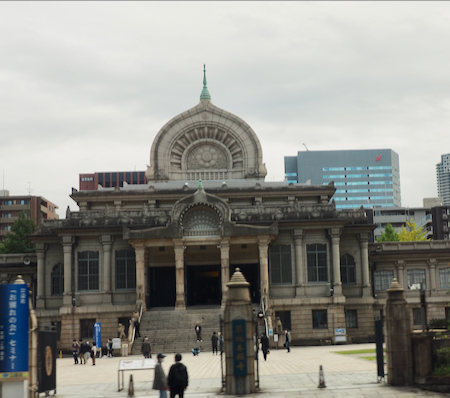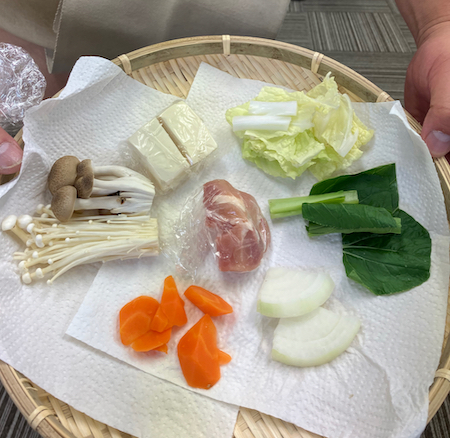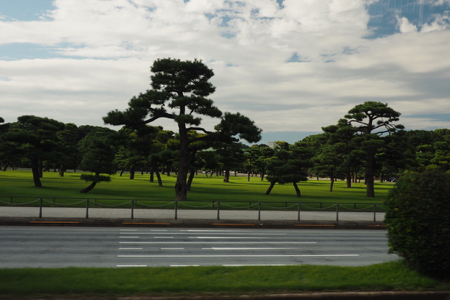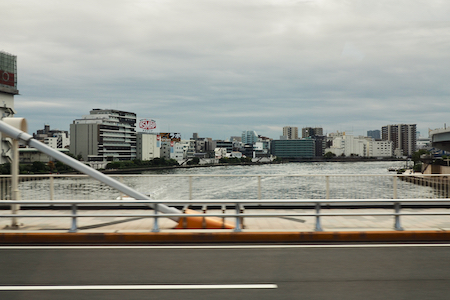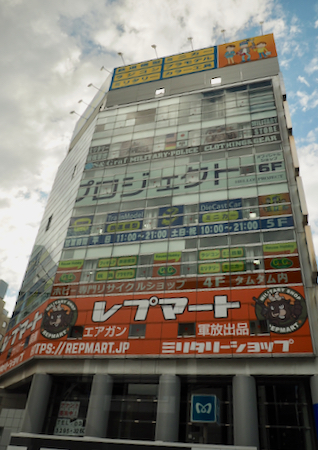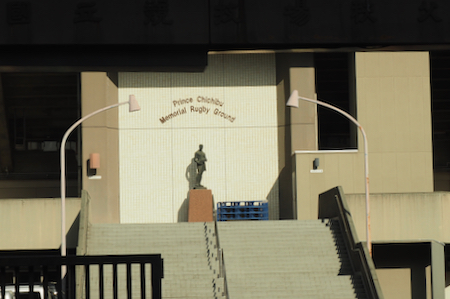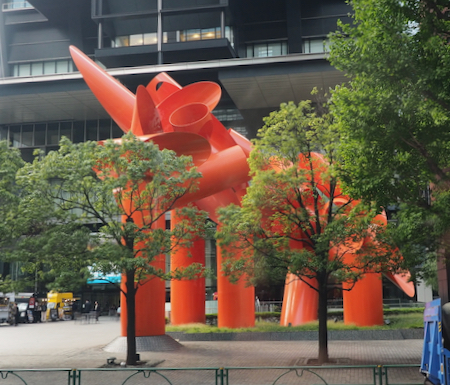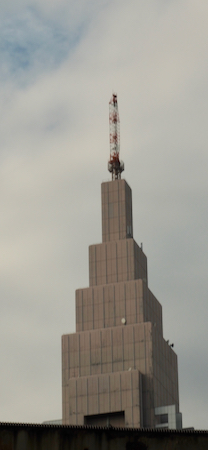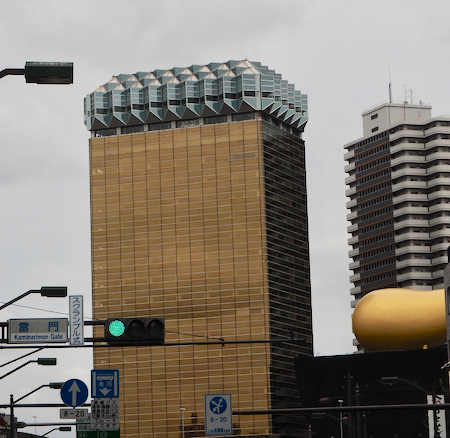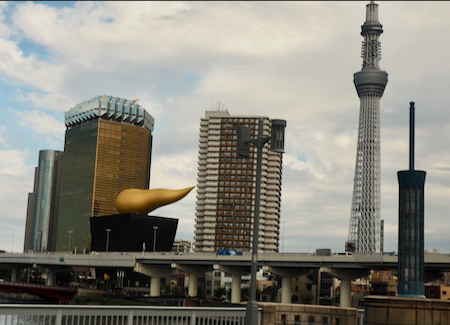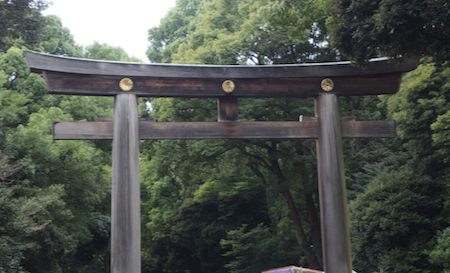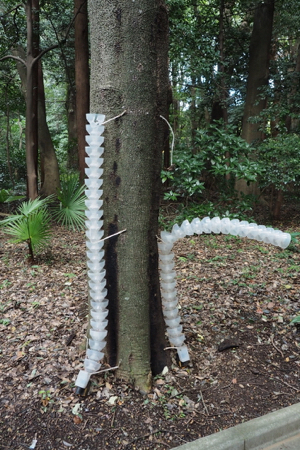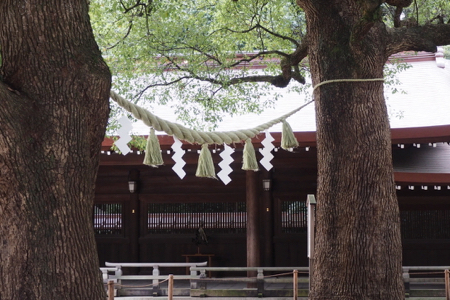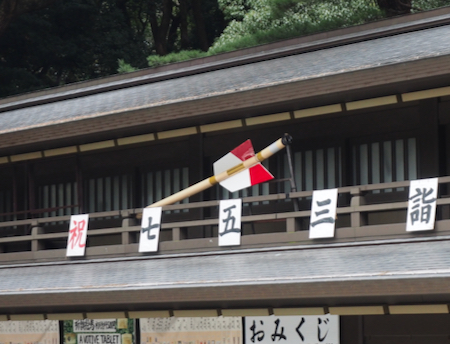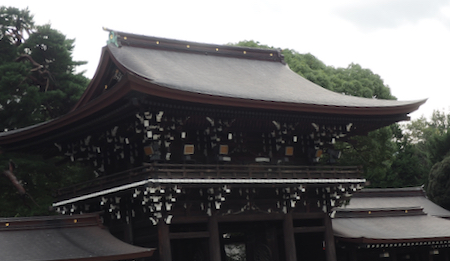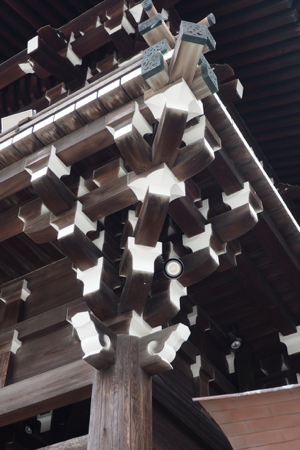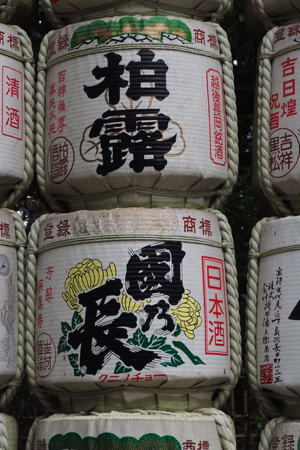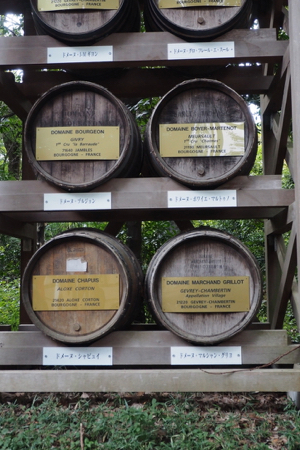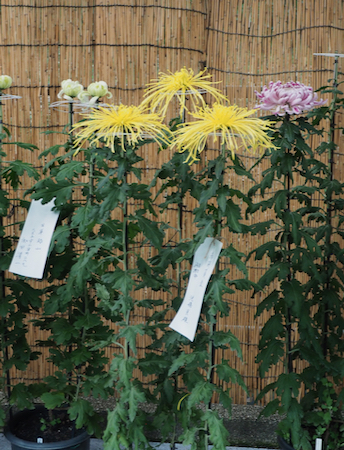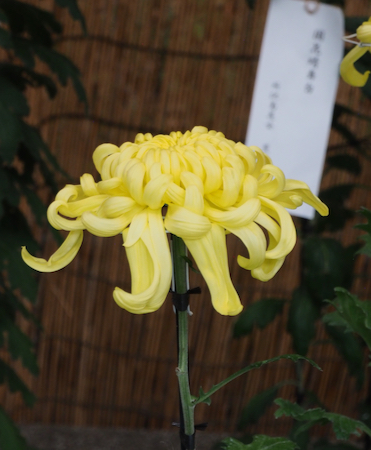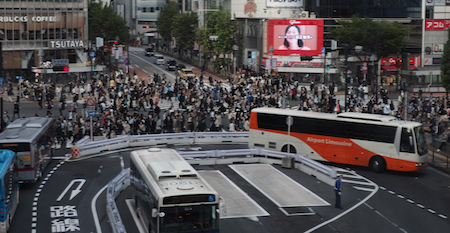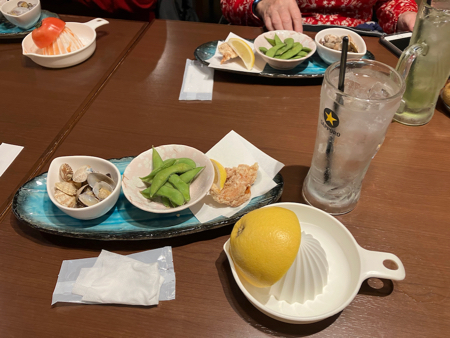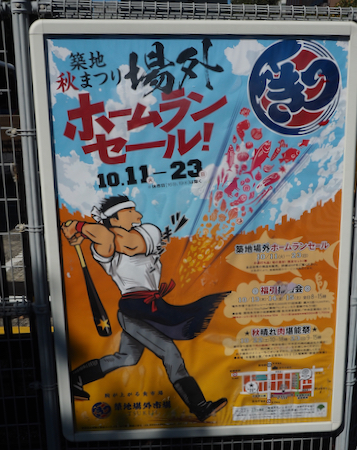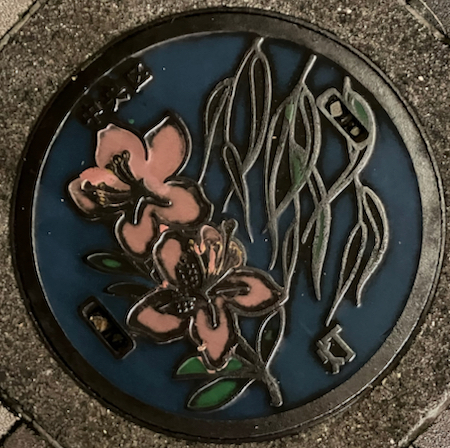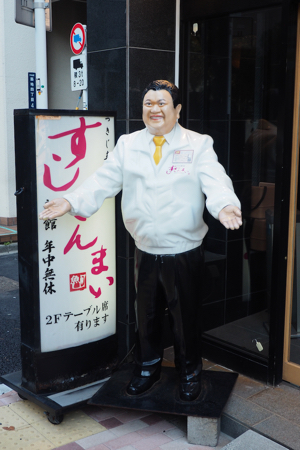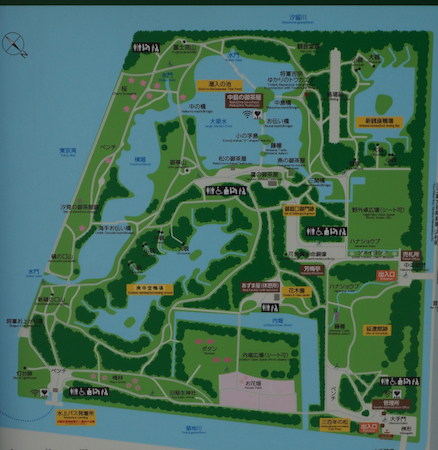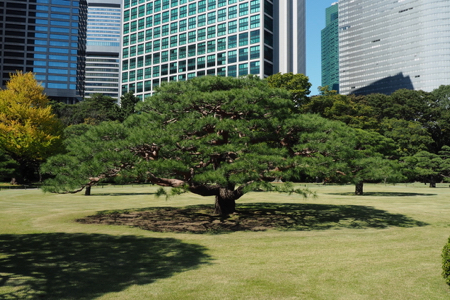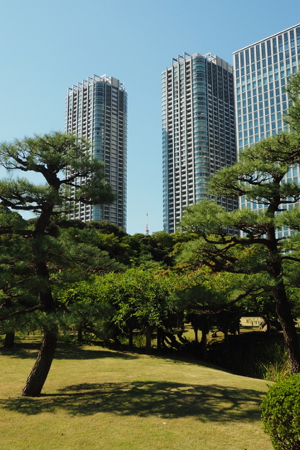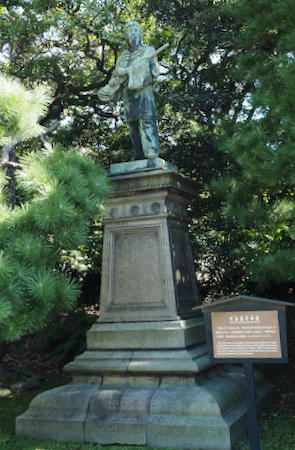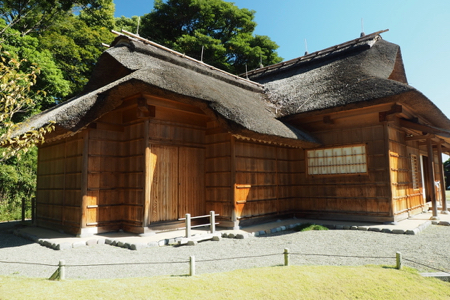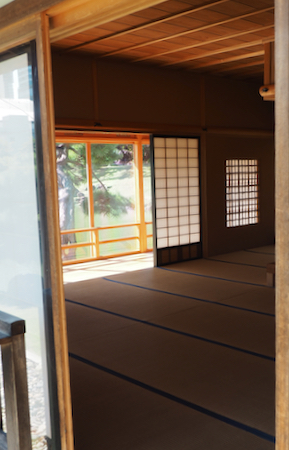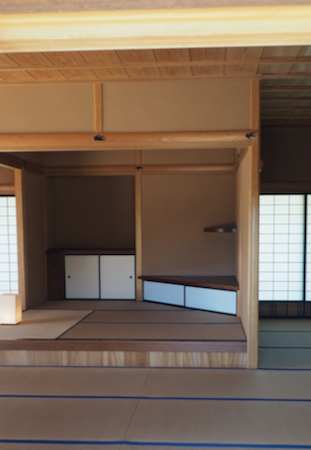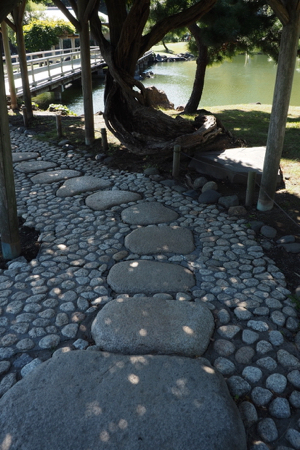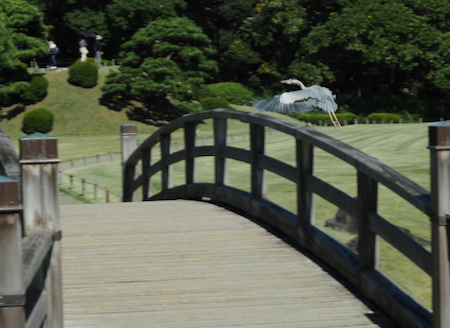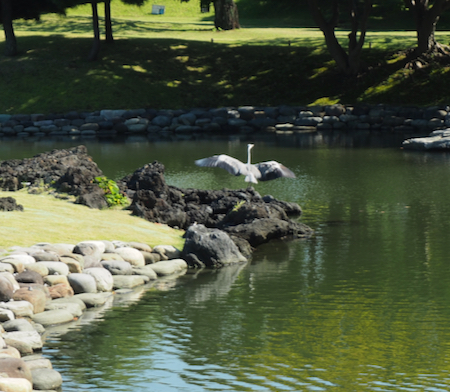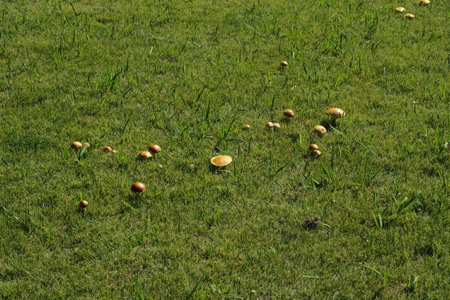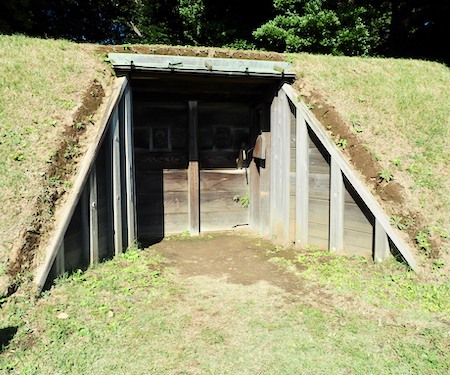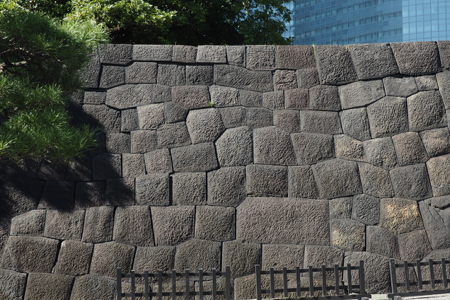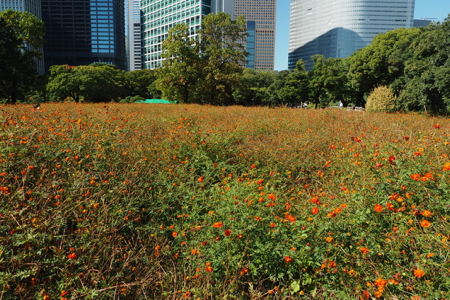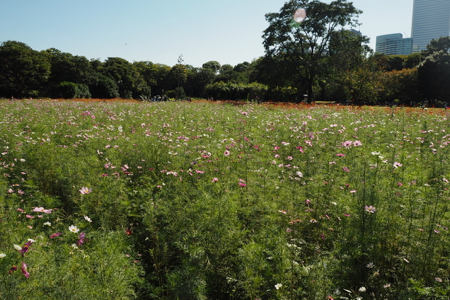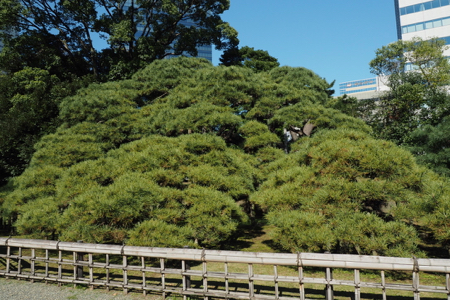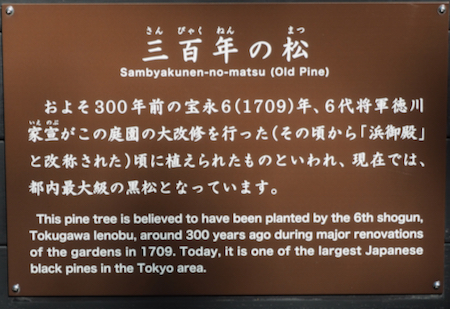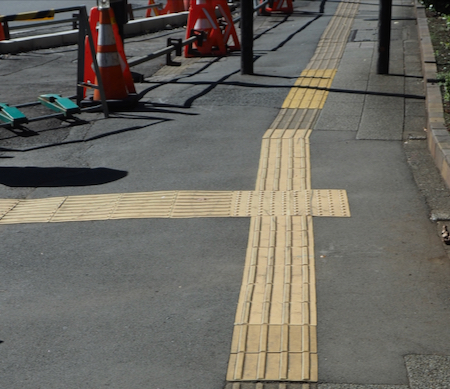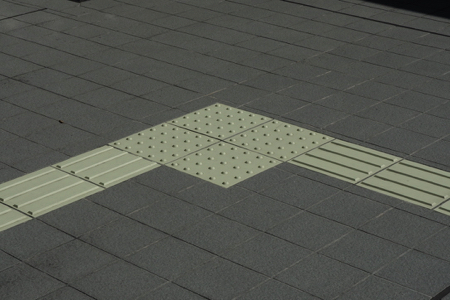Today the group was scheduled to attend a Sumo demonstration. On the way, the bus passed an old Stone Buddhist Temple. Most are made of ornamented wood, so this one was unusual.
The Sumo demonstration was at the same venue as we visited on the last trip. The same two retired wrestlers gave us a presentation. However, this time they demonstrated the wrestling match and techniques and then served us lunch - Chanko - a hot pot soup of chicken and cabbage and other vegetables with a rice cake and tea and water. The food was very good. The Chanko pot that served 17 of us would have served only three Sumo men. They would also have eaten 200 to 300 pieces of sushi to build up their body size. It was a fun morning.
Stone Buddhist Temple
Chanko - Hot pot lunch at the Sumo site
Next the bus took us on a brief of tour the nearby Tokyo sights including; the Imperial Palace (corner guard house, moat, 1,000 pine tree garden), the legislative buildings, the prime minister’s residence, a Rugby stadium, a baseball stadium (college teams play there now), and the main 2020 Olympic Stadium.
Grounds of the Imperial Palace (from the bus)
Sumida River
The whole building is a billboard - the stores are on
the level of the signs
Prince Chichibu Memorial Rugby Ground - spiritual home of the Japanese Rugby Union
This is entitled Iliad - metal sculpture by Alexander Liberman
Olympic Stadium - 2020 Olympics
Docomo Tower
Ashi Beer Hall
Ashi Beer Hall and Flame - the Flame, as you might imagine, has been given a variety of names
The next stop on the day's itinerary was the Meiji Shrine. This Shinto Shrine is dedicated to the deified spirits of the Emperor Meiji and his wife, the Empress Shoken. Meiji was the first monarch of the Empire of Japan and was at the head of the Meiji Restoration, a series of rapid changes which transformed Japan from an isolationist state to an industrialized world power.
The shrine area has a man-made forest of 173 acres that is generally left in its natural state - leaves are not raked up except for those on the gravel paths. We saw more of the decorated sake barrels and wooden Bourgogne wine barrels place at the shrine to be blessed by the priests.
There was a beautiful display of chrysanthemums organized for the upcoming chrysanthemum festival. The chrysanthemum is the emblem of the Japanese.
Tori gate at the Meiji Shrine
Funnel traps used to kill Ambrosia beetles that are destroying trees
Shide - or lightning wand - used to demarcate boundaries and in a variety of purification ceremonies
Arrow commemorates the annual Yabusame celebrations - Japanese horseback archery
Main hall of the Meiji Shrine
Pavilion details
Saki barrels donated to the Shrine by brewers - decoration of barrels signifies a spiritual connection between brewers and shrines for prosperity (see link for further explanation.)
Saki barrels
Wooden Bourgogne wine barrels
Offerings of nihonshu rice wine liquor for the anniversary of the birth of the Meiji Emperor.
Flower show (Chrysanthemums)
Our bus let us off to experience the Shibuya Crossing. This is a scramble street crossing where three million people cross each day. We looked down and watched the mass of humanity politely cross every two minutes.
Shibuya Crossing
Graffiti in Tokyo - one of the only two instances we saw
on the whole trip
Dinner appetizers
Thurs., 10/20 - Tokyo
Today we took a day off from our group. They went to the drum demonstration and then walked in the Asakusa area of Tokyo that we did two weeks ago. Instead, we went out for a walk to take some pictures and then to stroll around the Hama-rikyu Garden. This area was the family garden of the 17th c. Tokugawa Shogun. It is only about a half mile from our hotel and was lovely on this sunny 68° day.In 1868 the gardens became one of the homes for the Imperial family and in 1952 it was declared by the government to be a National “Place of Special Scenic Beauty” and that is an apt description. There are beautifully manicured lawns and trees shaped like full-sized bonsai. There are some tea houses, decorative ponds, bridges, wisteria trellises, a small Shinto shrine, fields of marigolds and cosmos, a plum orchard, a peony garden, duck blinds called Kamoha, where falconers or peasants with nets on poles caught wild ducks. We enjoyed watching herons, cormorants, egrets, and ducks around the three large ponds. The garden was very Japanese and delightful.
Advertising the Autumn Festival Home Run sale
at the Tsukiji Fish Market
The greeter
The menu
Map of the Hama-rikyu Gardens
Serenity in the midst of the city
Gale enjoying the beautiful day and surroundings
Statue commemorating the 25th wedding anniversary of the Meiji Emperor in 1894
Nice buildings on the skyline
The garden contains replicas of several tea houses or ochayas where past Shoguns would take meals or rest after participating in various activities in the gardens.
Tea house
Tea house interior
Tea house interior
Stone path
Bridge to small island in the lake
Tea house
Egret
Heron coming in for a landing
Heron drying its wings
Mushrooms growing wild in the grass
Duck blind
The garden had two Kamoba, or duck hunting sites. A narrow trench on the other side of the wall was supplied with suitable bait to lure ducks into the trench so hawks or nets could be used to catch them. Hunters watched through the openings until the right moment to attack the birds.
Stone retaining wall
Floodgate to adjust water levels in the ponds
Marigolds
Cosmos
By the entrance/exit is a 300-year-old black pine tree with long branches held up with poles.
Sidewalk guides for the visually impaired are
found all over Tokyo
A corner guide
| Return to Top | Return to Itinerary | Return to Trips page to view other trips | Return to Dreamcatcher Home Page |
